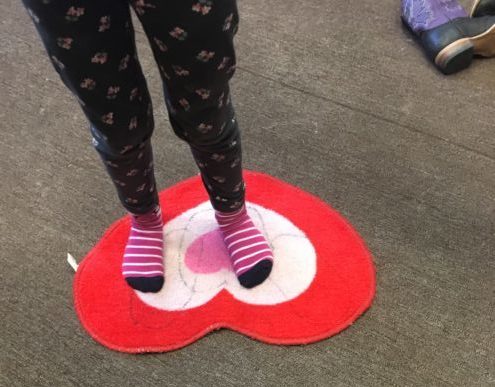
Edmund Sprunger of St. Louis has studied both violin pedagogy and psychology. In addition to leading a studio of fantastic students in Missouri he has his own private practice. His knowledge of the inner workings of the human brain greatly influences the way he teaches. In our Book 3 Suzuki Teacher Training Mr. Sprunger referenced the work of Selma Frieburg that has guided the systems I set for my students.
Students need to be invited and contained in order to feel comfortable.
- INVVITE. In the lesson you need to invite your students to express who they are. You acknowledge their worthiness, get excited about their vulnerability and hard work, and keep asking for more. Invite students to talk about experiences, seek to understand what they express, and begin the cycle again by asking, “What are you thinking?”
- CONTAIN. On the flip side, students also crave parameters. Essential for the creativity you invite is a safe barrier between themselves and catastrophe. Your students should sense a protective perimeter which provides as much freedom as possible without running the risk of harm. Establish predictable, structured routines so your student trusts your protective boundaries.
For me, the insight into the invite and contain distinction unlocked opportunities in my teaching. I began to understand why certain students were hesitant to take risks (not invited to) and others were constantly defying rules (groping for boundaries). I learned that cultivating a practice of invitation and setting up a tangible container for student work is necessary for a healthy studio.
These are the systems I’ve put in place to invite and contain my students.
- Establish a beginning and end. The most important container for your student is the lesson time itself. They need to know exactly when lesson time starts and finishes. I do this with a traditional Japanese bow typical of Suzuki lessons. The bow bookends the lesson with an aural, physical, and emotional cue. Before and after the bow I joke, chat, ask questions, and make silly connections. But once inside the parameters of the lesson I am hyper focused. And my students are trained to do the same.
- Establish a work station. Much like the bow sets the temporal parameters of the lesson I use foot charts, walls and chairs to build a physical parameter. My periwinkle students do all of their violin work on the foot chart. We will spin, sit, stand, and even jump on the foot chart, but we never leave it. Beyond the practicality of keeping students within an arms width distances and keeping them from running around the room, students also develop a comfort in their own spot in the lesson. It is a space away from their parent but also one I can’t encroach on without permission. I find the foot chart parameters age with students. They enjoy the routine of fending and claiming their spot on the floor. Even with older students I try to make it obvious exactly where their spot in the lesson to claim and create in is.

- Establish choices. The ultimate way to invite and contain your students is offering them choices. If I told instead of asked I would ignore the efficacy of my students. On the other hand, if I let students self direct the entire lesson without any guidance they will be overwhelmed by the abundance os choice. I instead set up a decision for my student with either two or three choices, all of which I would want them to choose. I had to work hard to move away from, “Would you like to make a bow hold?” questions in which students could opt out. I also never ask, “How many times would you like to do Mississippi Stop Stop?” when students can opt for an option that is less beneficial to their development. I usually frame questions as, “We can do [option 1], [option 2] or [option 3]. Which would you like to do?” or, “In order to repeat this passage would you prefer to play the dinosaur game or roll the dice?” Another way I like to invite student ownership in lessons is by asking them to choose the order of events from a list of activities I’ve already developed. I never instruct my students on which option to select, I’ve already done that work by framing the questions mindfully. When you let them answer freely you signal you believe in their decision making ability, while also assuming them that they can’t make a catastrophic decision on your watch.
Beyond establishing a beginning and end, spacial parameters, and choice in the lesson, there are a few other routines to make decisions about. Write out a step by step instruction guide for each of the following in order to clearly communicate to your students a proper lesson procedure. The clearer the instructions, the more consistent the routine, the more comfortable the student.
- How to prepare the bow (rosin, tighten, etc.)
- How to prepare the violin
- How to enter the lesson room
- How to tune
- What to do when you are speaking
- How to ask a question appropriately
- How to perform
- How to have a rehearsal with a pianist
- What to do first in home practice
- How to let you know if they did or didn’t practice well at home
Spend time deciding how these systems will be set in your studio to invite and contain your student so they feel comfortable. Tomorrow I will discuss the lingering discomfort you might have about teaching, and what to do about it.
